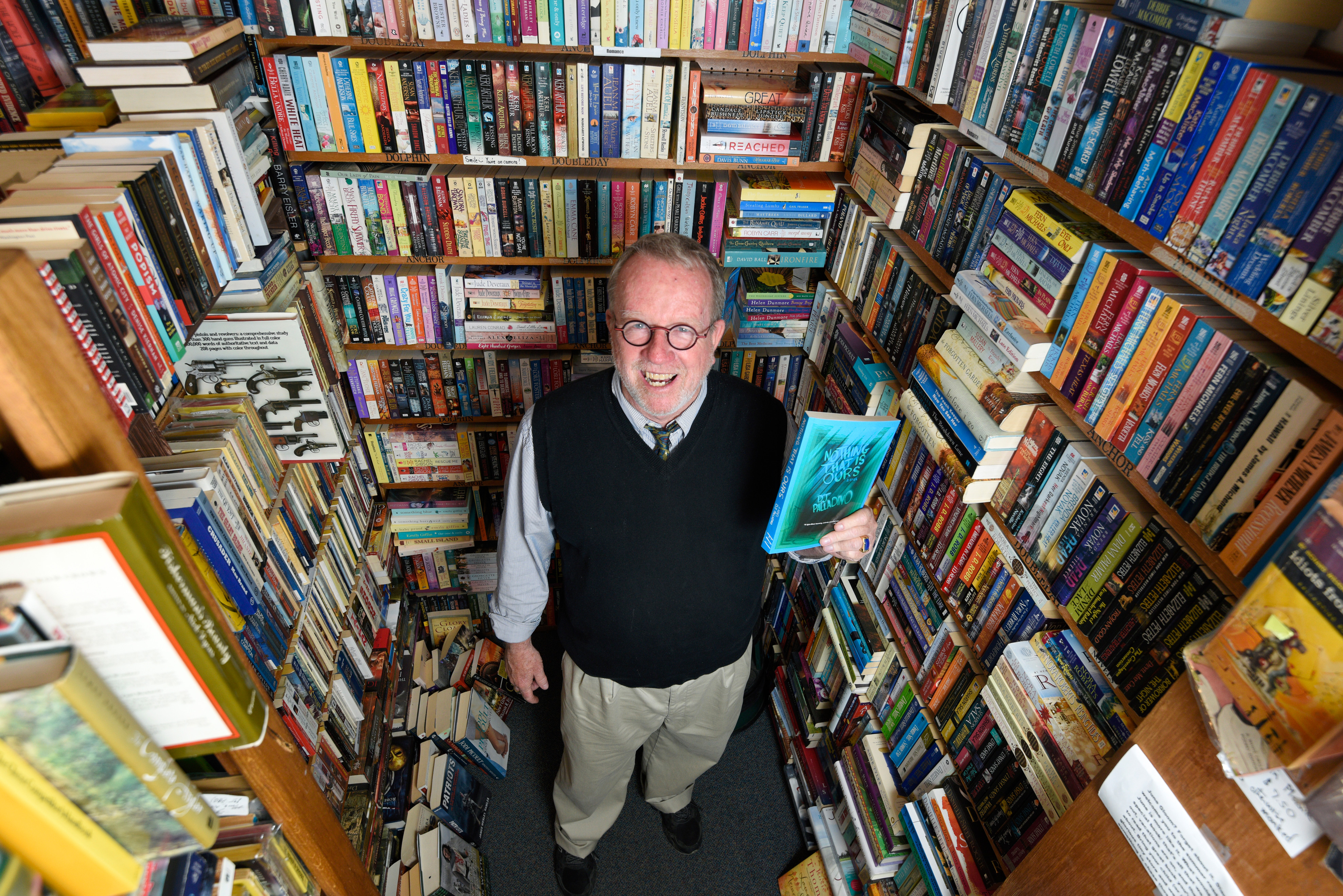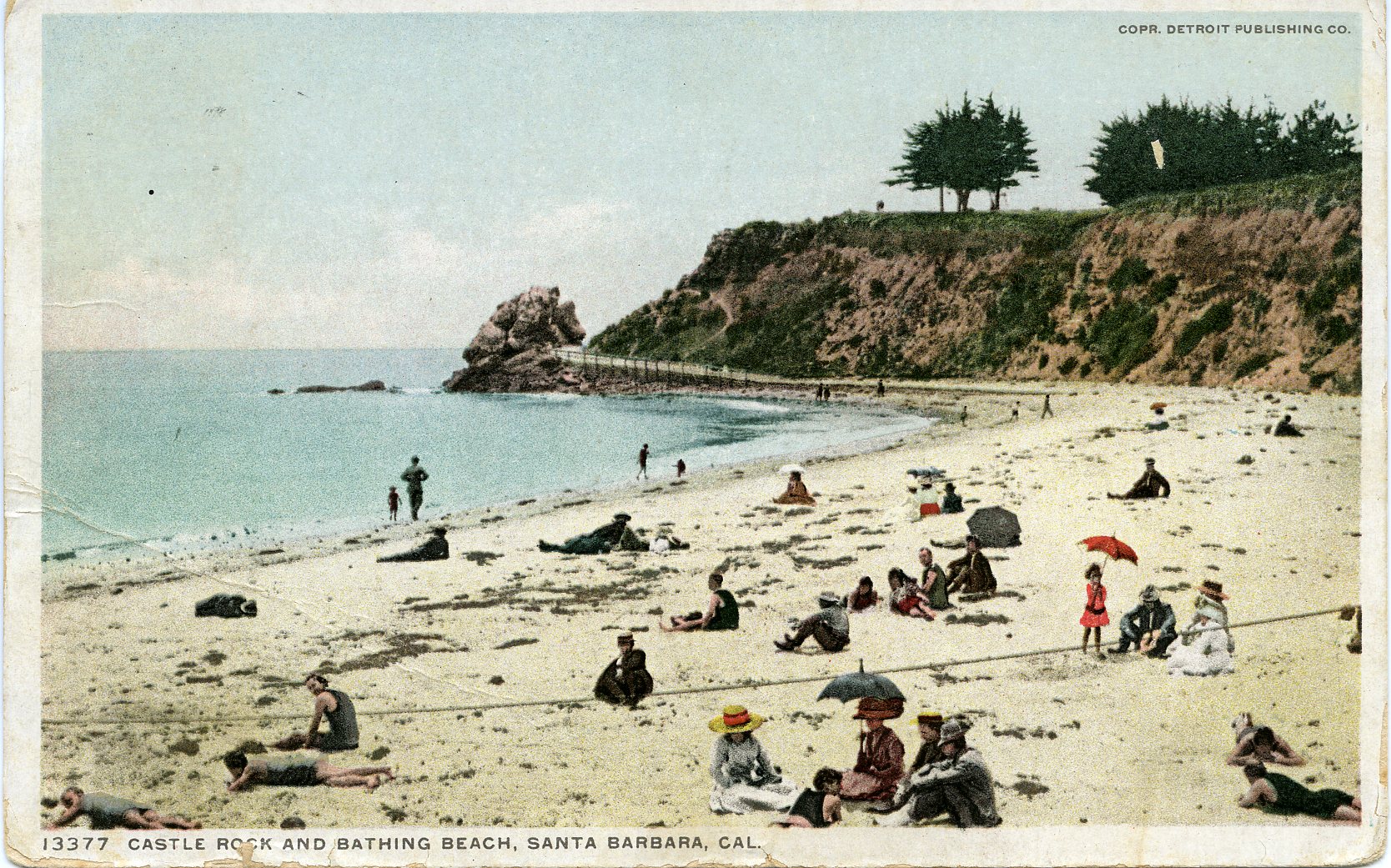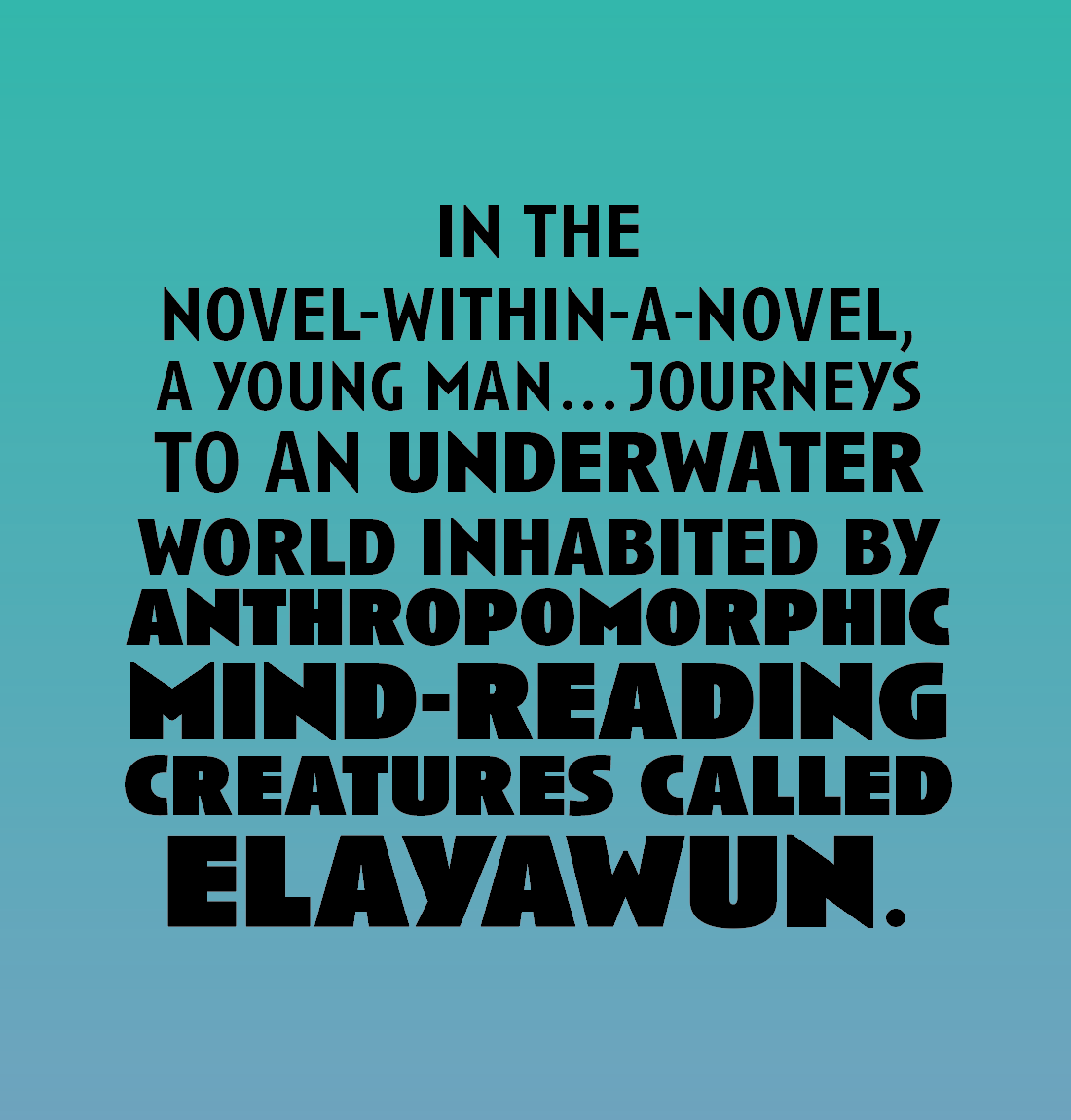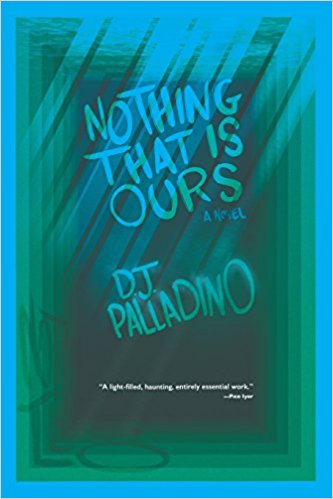‘Nothing That Is Ours’
D.J. Palladino Gives Santa Barbara Literary Treatment in First Novel

It might make sense to begin a story about D.J. Palladino’s debut novel, Nothing That Is Ours, by referring to the 65-year-old author as a late bloomer. Or to proclaim that, after buying the diminutive Mesa Bookstore with his wife, Diane Arnold, just about a month before the novel’s release, Palladino has finally arrived in literary Santa Barbara.
Whether a work of art is sold, however, is a poor measure of its value. Thus, such statements would be equal parts unfair to art and Palladino, who has been writing since he determined, 12 credits shy of a bachelor’s degree, that he’d learned as much as he needed from the UCSB English Department, and took a full-time job at the Santa Barbara News & Review, one of the two publications that would eventually merge and become The Santa Barbara Independent.
About five years ago, when I was working as a reporter for this publication, Palladino paused at my desk one day to compliment the lead sentence of a story I had written. I know it was a Wednesday because every Wednesday, Palladino stops by The Santa Barbara Independent to pick up his best friend and executive editor, Nick Welsh, for lunch.
My story was about a bankruptcy filing by a renowned vintner, and the first sentence read: “Turns out being good at what you do and making money are two separate endeavors.” Little did I know at the time how much the sentence also applied to Palladino, who was enduring an eighth year of trying to find a publisher for his novel.
Like the vintner, Palladino received praise for his product, but he struggled to sell it, even with help from his lettered friends. His first champion, and the first reader of the novel, was the travel writer and essayist Pico Iyer, who tried to pass the book on to his own agent — and then Thomas Pynchon’s agent. It was Carpinteria-based journalist and author Ann Louise Bardach who would successfully fulfill the role of literary matchmaker, connecting Palladino with his eventual publisher, Asahina & Wallace.
Palladino started writing the novel in 2000, and he finished the first draft four years later. The final edits were completed in 2015. It finally hit bookstores this past March.
“James Joyce didn’t take 15 years to write Ulysses,” Palladino joked over dim sum as I interviewed him for this story and he feverishly shoveled pork buns and roasted duck onto his plate.
Tastemaker
Save for red-striped Coke-bottle eyeglasses covering a pupil that bleeds into his left cornea, there’s little about Palladino’s appearance — think pleated khakis and well-traveled sneakers — that suggests his total immersion in the joys of aesthetic pleasure. (I do have it on good authority, though, that his close-cropped salt and peppers are managed by an Italian hairstylist.)
Nevertheless, whether it’s the food on his tongue — or the words — Palladino takes taste quite seriously. This is a quality he’s reaffirmed during a long career as a critic. In a small town such as Santa Barbara, where it’s impossible to write about someone you aren’t eventually going to get stuck behind in a checkout line, Palladino has never shirked from leveling unstinting feedback or, more simply put, being honest about his likes and dislikes.
It’s also a quality he impressed upon his son, Zac, when they cowrote film reviews in the ’90s. Palladino would force his pint-sized partner to defend his opinions about movies and to reassess his prejudgments of those he didn’t initially want to see. (Now grown, Zac designed the cover for his father’s novel.)
Palladino fondly remembers writing a book review in which he “dumped” on the text that, ironically, planted the seed for Nothing That Is Ours. It was a volume of academic essays about Santa Barbara history. Palladino found the entries dry and lifeless, but one stood out to him. It told the story of Castle Rock, a large geographic structure that was dynamited to make way for the Santa Barbara Harbor at the behest of a rich man who wanted a place to park his yacht.

Palladino originally set his novel in 1928, the year of Castle Rock’s destruction and the beginning of Santa Barbara’s makeover as a Spanish-Neocolonial postcard. Nature, in the form of a massive earthquake, had recently undone the city’s human infrastructure, and now it was time for humans to take their revenge.
Eventually, Palladino moved the action of his novel to 1958 and 1959, a turning point, he said, when faith in man’s dominion over the natural world started giving way to an environmental ethic. Castle Rock — recent enough to be remembered by the book’s adult characters — still plays a central role in the novel, a murder-mystery that begins in noir style with clipped dialogue and a dead body washed up on the beach.
Life and Death
If the book opens with a hard-boiled vibe, it closes a bit more like, well, that fried egg your brain turns into when it’s on drugs. I mean that in the most complimentary way possible. Technically ambitious, the narration jumps back and forth chronologically, and it increasingly includes passages from a novel that protagonist Trevor Westin wrote when he was a teenager. In the novel-within-a-novel, a young man (who shares his name with Westin’s dead older brother) journeys to an underwater world inhabited by anthropomorphic mind-reading creatures called Elayawun.
Along the way, Palladino treats his readers to a psilocybin-fueled psychedelic episode, the most tension-filled family picnic ever set to prose, a journey to the Channel Islands partially traveled via nuclear-submarine-detecting naval ship, and an allegorical fantasy world. The end result is a text of freewheeling fun interspersed with sentences of backbreaking beauty and honest introspection, much of it about mortality.
“Some part of me wonders if someday I might want to pass away,” narrates Westin near the beginning of the novel, “as the old people put it; all this might be too much to take forever. When I’m tired, maybe, or sad. But what a price to pay. Give up everything for the mere relief of nothing. And don’t call it peace because it can’t be experienced.”
When I asked him about his ruminations on mortality, Palladino said, “If you want to get fancy about it, mystery novels are about identity and death.” When it comes to death, a topic the nuns regularly reminded Palladino of in Catholic school, he said, “all the other traumas are secondary.”

If the novel touches on the metaphysical quandaries of who we are and why we’re here, it’s also very much about the makings of a specific cartographic entity. In the waning moments of the 1950s, larger-than-life figures, armed with charisma and money, were willing Santa Barbara into a locale of import, quite literally shaping the landscape and inscribing it with a history, unmasking the relationship between story and place.
Remains of the Presidio, in the city’s Chinatown, were deemed a historical landmark, and their reconstruction would be subsumed into Pearl Chase’s plan to blanket the burgh in red tile and white stucco; intellectual titan Aldous Huxley was loitering at local haunts before delivering a series of public lectures at the newly minted University of California campus; City College student David Crosby was gigging at Santa Barbara venues; and newspaper publisher Thomas M. Storke had five years previously dammed off the Santa Ynez River to create a water supply capable of supporting an urban population as developers papered over the Mesa’s oil derricks with tract homes.
In fact, Chase, Storke, Huxley, and Crosby (still called Cortlandt at the time) are all characters encountered by Westin, the scion of a deeply rooted Santa Barbara family and a stringer for the Los Angeles Times who attempts to solve the mystery of the dead man on the breakwater.
Santa Bizzara
One could say that Palladino’s book is his own attempt to give shape to Santa Barbara. “I’m giving a version of Santa Barbara which is bizarre,” Palladino told me, but one he also feels may be “the most accurate.”
“I became very interested in the city as a façade. It’s like Disneyland. It’s like a theme park,” said Palladino, who came here as a sophomore in high school when his parents relocated the family from the San Fernando Valley.
When I suggested that Santa Barbara’s superficiality is exactly the reason some are turned off by it, he countered, “It’s like every other city, just more dramatic. Santa Barbara is a superb metaphor.”
In that case, Nothing That Is Ours is a metaphor for the act of writing itself, reminding us that Santa Barbara is a tablet continually erased and reimagined. In one scene, set by the corner of Anacapa and Canon Perdido streets, Westin muses, “Leaning up against the wall, I could finally see that place as it had been: I was standing inside invisible walls of a Spanish presidio built on top of a ransacked village built by a doomed prehistoric people. Underneath my feet were the cannon balls used to subdue and the skulls by them subdone. Soon the place would become a replica of the cruel fortress, recreated as entertainment.”
As I read the book, I was reminded of a quote by a writer whom I cannot remember (and whose name I could not pinpoint, even with the help of Google) proclaiming that the novel is the turkey vulture of literary genres because it swallows whole every other written form. Nothing could be truer of Palladino’s novel, which is accented with poems, historical documents, literary allusions, and the novel-within-a-novel.
The book’s title is borrowed from a line in a poem called “The City in the Sea” by Edgar Allan Poe, who also happens to have innovated the genre of the detective story. Mystery tales dangle in front of their readers the promise that deductive reasoning can make sense of the seemingly irrational. In the best stories, including those by Poe, the solutions to crimes often leave us even more perplexed about the larger mysteries.
Palladino’s novel does just this, questioning many of the borderlines that help maintain order in everyday civilized life: those between reality and fantasy, sanity and illness, nature and culture, life and death. The pursuit of orientation gives way to disorientation.
“The art of composition [of the novel] is way more fun” than composing newspaper articles, claimed Palladino. He said that the cliché about the characters taking over the story proved true of his own process. His approach, he said, is akin to that of the prolific novelist Elmore Leonard, whom he once interviewed. Leonard never outlines his stories. “He just starts with a premise,” said Palladino. “You never know what’s happening next because he didn’t know.”
It’s definitely the characters who drive the action in Nothing That Is Ours. The dialogue is so rife with witty wordplay that I was never lulled into believing the characters were real people, but it was so enjoyable that I wished real people spoke more the way they do. According to Palladino, his publisher fell in love with one of Westin’s love interests — the femme fatale, so to speak. For my money, the scene-stealer was Westin’s uncle Francis, a puerile poet who memorialized Castle Rock in verse and serves as a moral compass for the protagonist.
“Haida,” Francis names the boat for which Castle Rock was destroyed, also the name of a village in Alaska. “A place where the potlatch was practiced regularly, a ritual stomping of the culture around itself, periodic purification, waves of obliteration that washed away the past — not unlike the people who created your precious harbor, who would rather obliterate the earth. They built it and destroyed the sand flow off the coastline, changed all the beaches. Now they have to dredge out the harbor every year. Nature itself wants to destroy it.”
Paradise Revisited
During one of my conversations with Palladino, we reflected on the fact that writers and residents alike often refer to Santa Barbara as paradise. Palladino concluded that if Heaven is “a place where nothing / Nothing ever happens,” quoting a Talking Heads lyric, then “Santa Barbara is not like that.”
He’s seen it change many times over in his lifetime, which has also gone through its share of vicissitudes. While he never completely stopped writing for The Santa Barbara Independent, he left his staff position for a full-time job at the Goleta publishing house ABC-CLIO. He then moved on to the Interdisciplinary Humanities Center at UCSB, where he continues to run the Magic Lantern Films series in Isla Vista and serves as an adviser to the student arts and culture magazine Word.

Throughout, Palladino, who is almost finished with his second novel and has an unpublished children’s novella under his belt, has never felt as if Santa Barbara was too limiting a place for conducting a life of letters. This comes through in Nothing That Is Ours, where the city is not merely a conveniently beachy backdrop for a macabre tale but is genuinely woven into the story. Free from the provincialism of natives and the cosmopolitanesque snobbery of transplants, Palladino might just be the person to best appraise the city. If not, he’s still written a book worth reading.
411
D.J. Palladino will be signing copies of Nothing That Is Ours on Thursday, July 6, 7-9 p.m. at The Book Den (15 E. Anapamu St.). Call (805) 962-3321.



